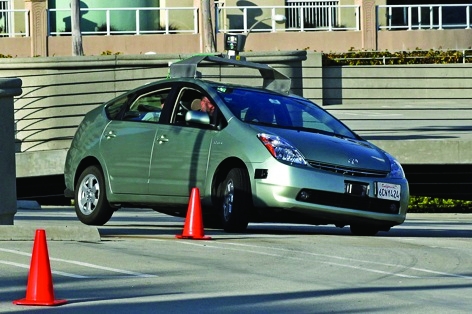For many people the prospect of seeing a driverless car on our roads is still science fiction or, at best, one possible scenario that may come about many years into the future. However, in the world of the microprocessor and with reliability of electronic systems at the levels seen in the aerospace industry, the prospect of driverless cars on our roads is not as far off as many think.
(As referenced in the ‘Under the bonnet of MIRA’s network-assisted vehicle’ The Engineer, 6 February 2012) In reality, driverless car technologies are already commonplace on our roads today – albeit that they are more often referred to as driving “assistance” systems.
Adaptive cruise control, emergency braking systems, following distance regulators, lane keeping aids and active park assists are all technologies routinely being incorporated into modern cars. These features effectively turn a driver operated vehicle into an autonomous one, although vehicle manufacturers currently only allow them to be deployed in carefully defined situations – for example ‘auto-park’.
Such systems have put us firmly on the path towards driverless cars and any doubters should look no further than Google’s Driverless Car for proof. To date it has travelled over 140,000 miles on Californian roads, making decisions in a variety of situations (inner-city congestion, motorways, mountain roads, driving at night and pedestrian avoidance) clearly demonstrating the capability, safety and reliability of driverless technologies.

However, as is often the case with revolutionary technologies, there are also potential drawbacks. Among the concerns voiced by drivers is that this new technology will impact upon driver enjoyment - a valid argument you may think.
If what is meant by ‘enjoyment’ is (to use the advertising cliché) driving on an empty road taking in a backdrop of outstanding natural beauty, surely it would be more enjoyable and safer for us to either; stop and get out of our cars to enjoy the view or (if that is a step too far) be supported by technologies capable of protecting us if we are distracted from the road whilst behind the wheel?
Tragically 222,146 casualties were recorded on UK roads in 2009, of which 2,222 were fatalities. With more than 80% of road crashes caused by human error, it therefore follows that mitigating this element as far as possible is likely to radically reduce the number of injuries and deaths on our public roads and that driverless cars therefore offer the prospect of huge improvements in road safety.
And, since driving through such deserted Alpine vistas are a rarity, driver ‘enjoyment’ could legitimately be described as removal of the frustration experienced during the daily commute on congested roads.
It is estimated that 7,500km of European roads are blocked by traffic jams each day, with congestion adding an extra 6% to the EU’s fuel bill year. To put this into perspective the combined cost to the UK is between £10bn and £30bn per year (DFT and Automotive Council).
The introduction of driverless cars co-operating with each other and with ITS (Intelligent Transport Systems) could therefore enhance ‘enjoyment’ whilst also easing congestion on our current road infrastructure, reducing fuel bills and potentially negating the need for additional roads to be built – which would be a welcome change in any economic climate.
At present the high cost of building and developing fully driverless cars with the levels of safety and reliability required means that their commercialisation is difficult to justify. However, the automotive industry has a long history of rising to new technical and regulatory challenges – just look at the improvements in automotive safety and emissions over the last ten years.
So, despite this, I’m confident that the automotive industry will overcome this new engineering challenge and - with the help of specialist transport engineering and consultancy companies - be able to develop a commercially viable range of driverless vehicles.





Glasgow trial explores AR cues for autonomous road safety
They've ploughed into a few vulnerable road users in the past. Making that less likely will make it spectacularly easy to stop the traffic for...